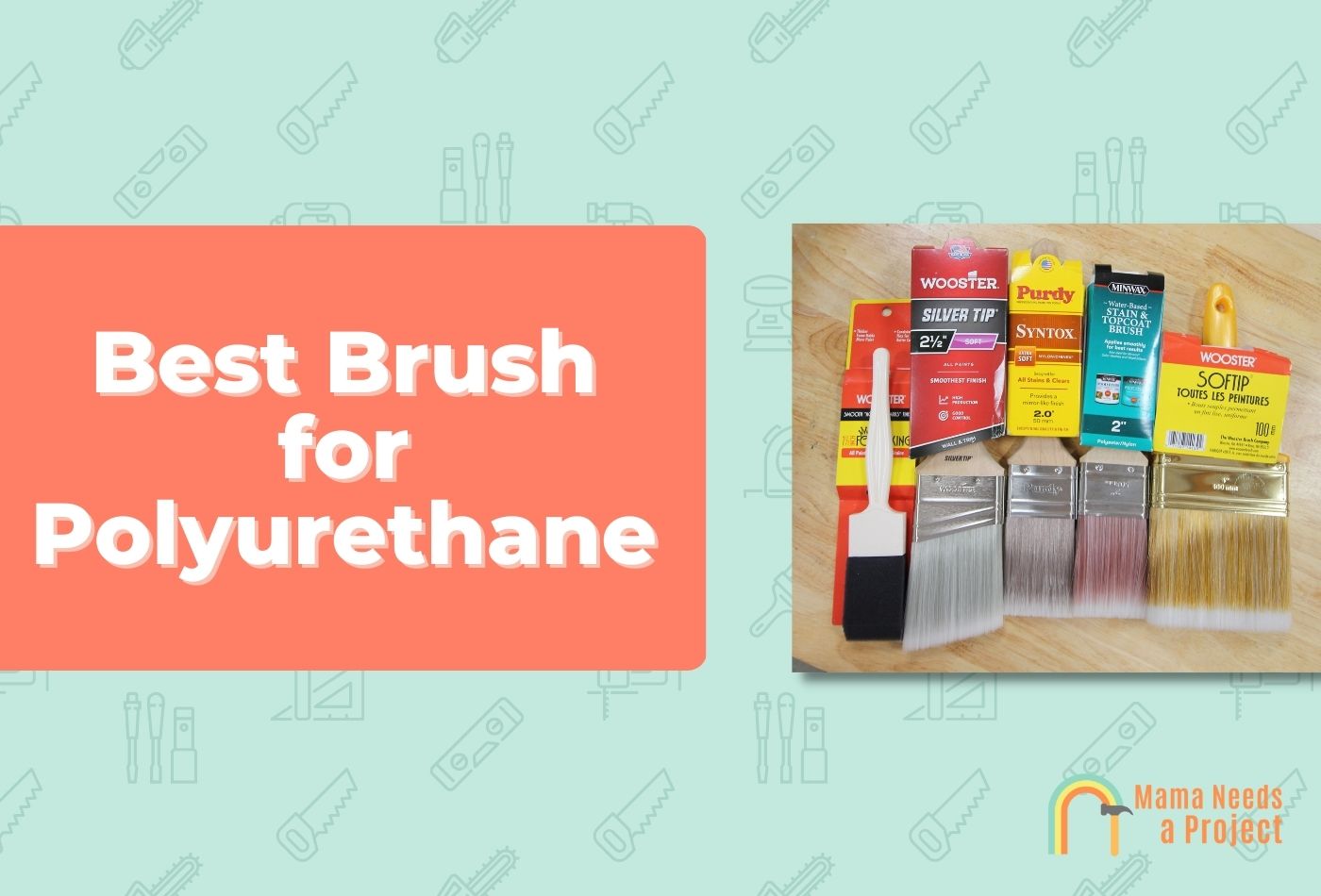I Tested 6 Polyurethane Brushes: These Are the Best (2024)
Looking for a polyurethane brush? There’s no shortage of options, which is why I tested some of the most popular options to help you find the best one for your needs. Here’s my list of the best polyurethane brushes you can buy.
If you’re in a hurry, the best brush for polyurethane is the Purdy Ox-Hair Series Brush. This is a natural bristle brush that works amazing with both water and oil based polyurethane. It will last for years and covers well.
Best Brushes for Polyurethane
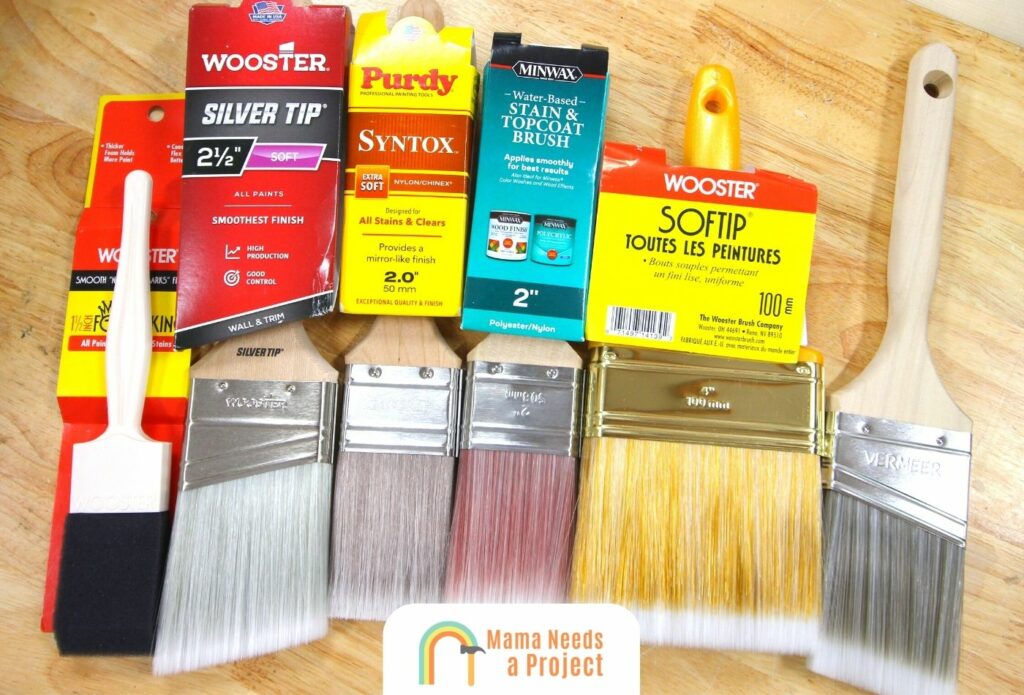
- #1 Best Overall – Purdy Ox-Hair Series Polyurethane Brush
- Best for Water Based Polyurethane – Minwax Polycrylic Wood Stain Brush
- Best Angle Brush – Wooster Angle Sash Paintbrush
- Best Value – Pro Grade Paint Brushes
- Best Large Brush – Wooster Brush Paintbrush Softip
- Best Foam Brush for Polyurethane – Wooster Foam King Paintbrush
1. Purdy Ox-Hair Series Polyurethane Brush
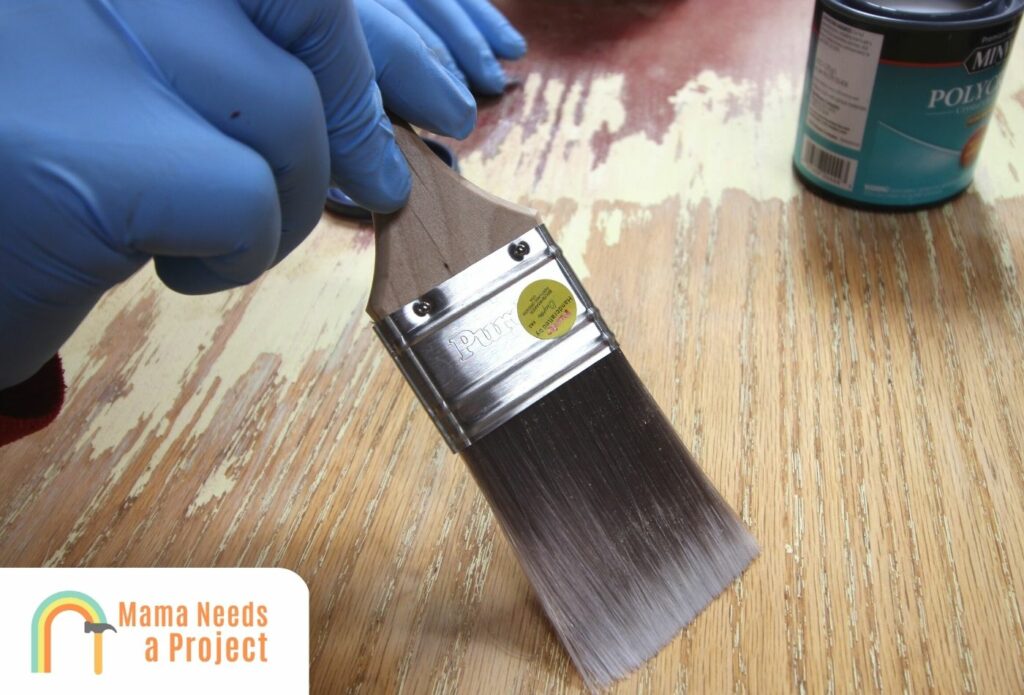
If you’re looking for a quality polyurethane brush that will last for years, the Purdy Ox-Hair Natural Bristle Brush is the best option for you.
This brush is made with natural bristles, which tend to be better at leaving a smooth coat when compared to synthetic bristle brushes, and it comes in a variety of sizes depending on your needs. You can find both angled and flat tip options, whichever you need.
This poly brush boasts a stainless steel ferrule that helps to keep the bristles in good condition after each use.
It’s comfortable to use and great for all types of paints, stains, and polyurethane. This is also one of the best brushes for wood stain.
What I Liked:
- Natural bristle brush which makes it easier to apply polyurethane without brush marks
- High quality brush, so you won’t need to replace it as often
- Very versatile brush that can handle all different types of paints, stains, varnishes, or types of polyurethane
What I Didn’t Like:
- More expensive than other brushes
- Can shed a decent amount of bristles over time
My Thoughts:
Ultimately, if you’re looking for the best polyurethane brush, I highly recommend the Purdy Ox-Hair Brush for polyurethane. It’s a natural bristle brush that left virtually no brush marks and provided even coverage. While it’s more expensive than others, I believe this polyurethane brush is worth the money. It comes in many different options depending on your project and is great at applying polyurethane on several different wood surfaces. When you’re using oil based polyurethane or water based polyurethane, this brush is an excellent choice.
Other Stores
2. Minwax Polycrylic Wood Stain Brush – Best for Water Based Polyurethane
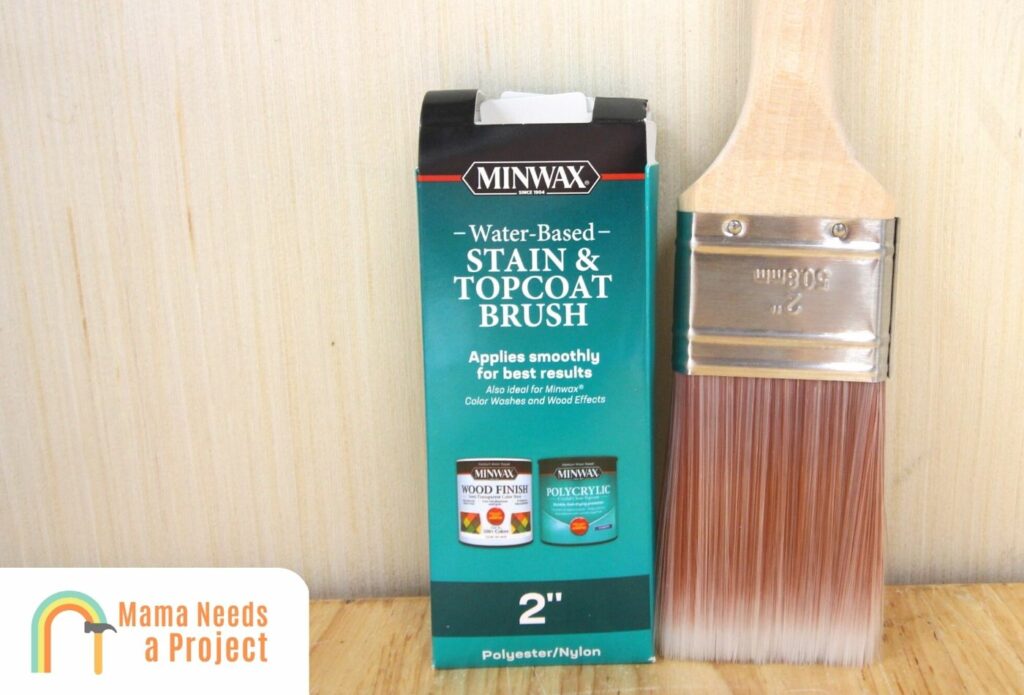
If you’re working with a water based polyurethane, another solid choice is the Minwax Polycrylic Brush.
Minwax has been making polyurethanes and wood stains for decades, and their brushes are extremely high quality.
This is a flat tip synthetic fiber brush that comes in two sizes – 1″ and 2″ depending on what you need.
What I Liked:
- Provided even coverage with no brush strokes
- Great value for the price
- Bristles didn’t shed as much as a natural bristle brush
What I Didn’t Like:
- Not many size options, so it’s not great for massive projects
- Not as versatile as other brushes
My Thoughts:
The Minwax Polycrylic Brush is another one of the best brushes you can buy for applying polyurethane to your projects. It’s comfortable and provides great coverage with limited streaking. This brush is specifically made for applying water based polyurethane – so if you’re using oil based polyurethane, I’d go with the Purdy brush above. It also only comes in two sizes, so depending on your project you might need to go with another brush.
Other Stores
3. Wooster Brush Silver Tip Angle Sash
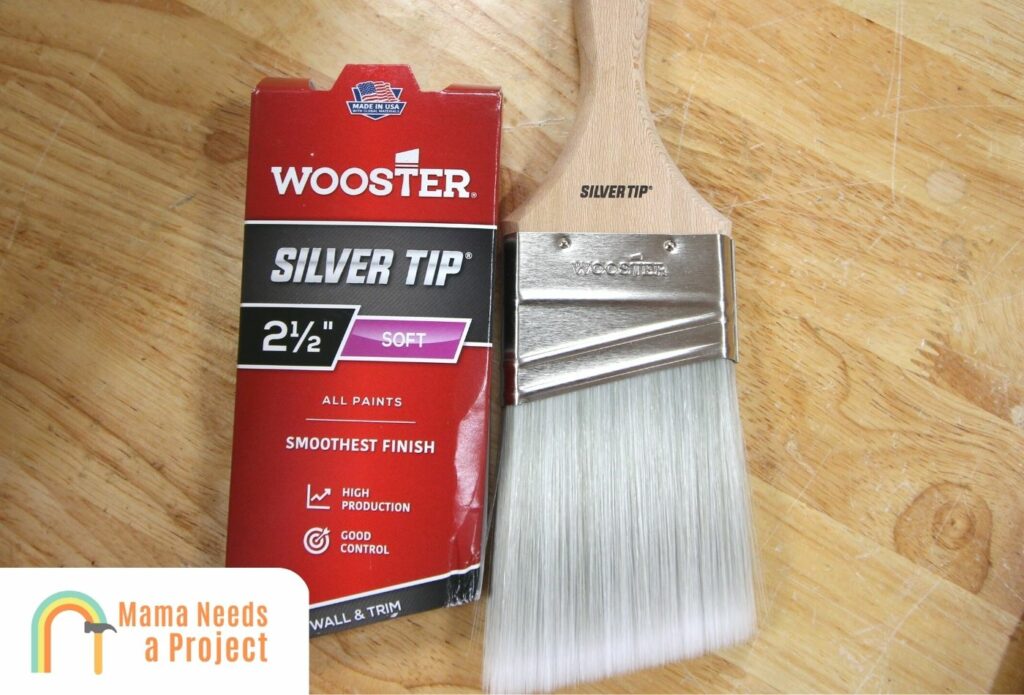
If you’re looking for a versatile brush that works great with both water and oil based polyurethane, this Wooster Brush Silver Tip Angle Sash is a tremendous option.
This brush for polyurethane is manufactured with synthetic fibers that are chemically tipped with polyester to leave no brush marks. It also has a stainless steel ferrule that is rust-resistant.
I found that it works slightly better with water based polyurethane, but it’s also good with oil based stains as well.
Because of the angled tip, you can easily reach more hard to reach areas than a flat tip brush which is handy for some projects.
What I Liked:
- Extremely versatile brush with many size options that can suit almost any project
- Left virtually no brush marks that I could see
- Good value for the money
- Natural wood handle with stainless steel ferrule that’s built to last
What I Didn’t Like:
- Sheds a decent amount of bristles
My Thoughts:
If you’re looking for a polyurethane brush that leaves no brush marks, this Wooster Brush is a great choice. It comes in many different sizes and feels comfortable when applying polyurethane. This is one of the best high quality brushes you can buy and it will last for years if you clean it after using. My only complaint is the amount of bristles that shed when applying polyurethane, but otherwise it’s a great brush for polyurethane.
Other Stores
4. Wooster Brush Foam King Paintbrush
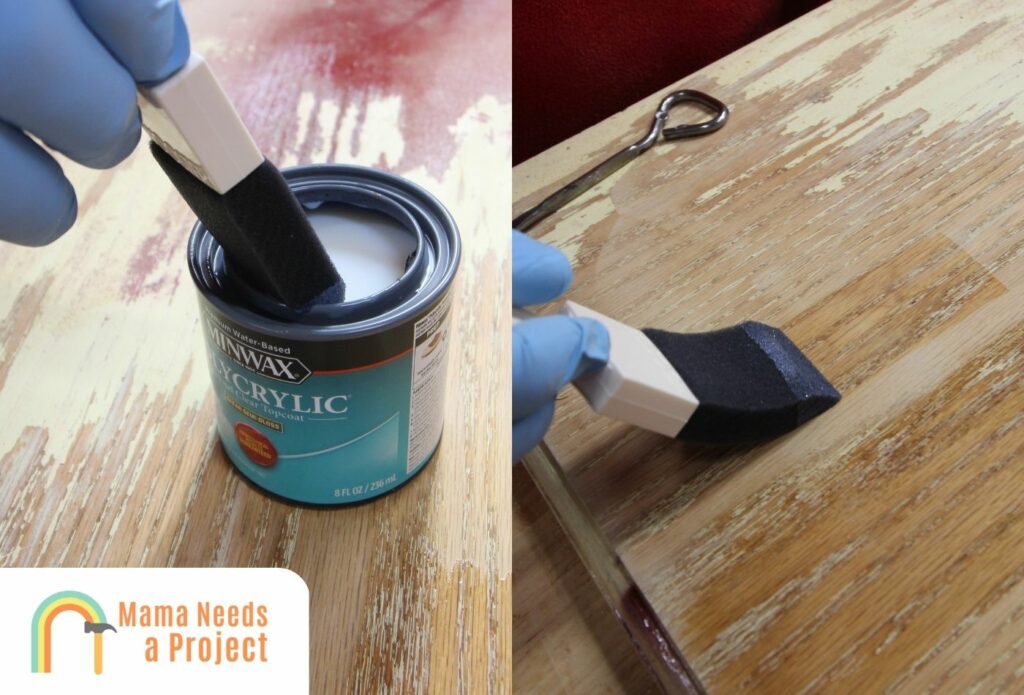
When it comes to applying polyurethane, some people prefer using a foam brush instead of more traditional brushes.
This Wooster Foam Brush was much better than I expected!
It absorbed a decent amount of polyurethane with each dip and didn’t streak much at all when applied.
It only comes in a single size, so it might not work for every project, but if you’re working on a smaller project – this is one of the best brushes for polyurethane.
It’s difficult to compare to the others because of how different it is. If you prefer a foam brush, this one is the one for you. However, if you don’t like foam brushes, I wouldn’t opt for this one either.
What I Liked:
- Extremely affordable
- Can be used on paints, stains, and polyurethane
- Didn’t have to worry about bristles falling out and causing streaking
What I Didn’t Like:
- Not as durable as other brushes
- Single size, so it might not work for every project
My Thoughts:
If you’re looking for a foam brush to apply polyurethane, this Wooster Foam King Paint Brush is the right brush for you. It’s extremely affordable and it provided a very even coat of polyurethane that’s hard to beat. It’s also nice not having to deal with bristles falling out because it’s a foam brush. The only downsides are that it comes in a single size, and it’s not very durable. The foam breaks down and needs to be replaced every few applications.
Other Stores
5. Pro Grade – Paint Brushes
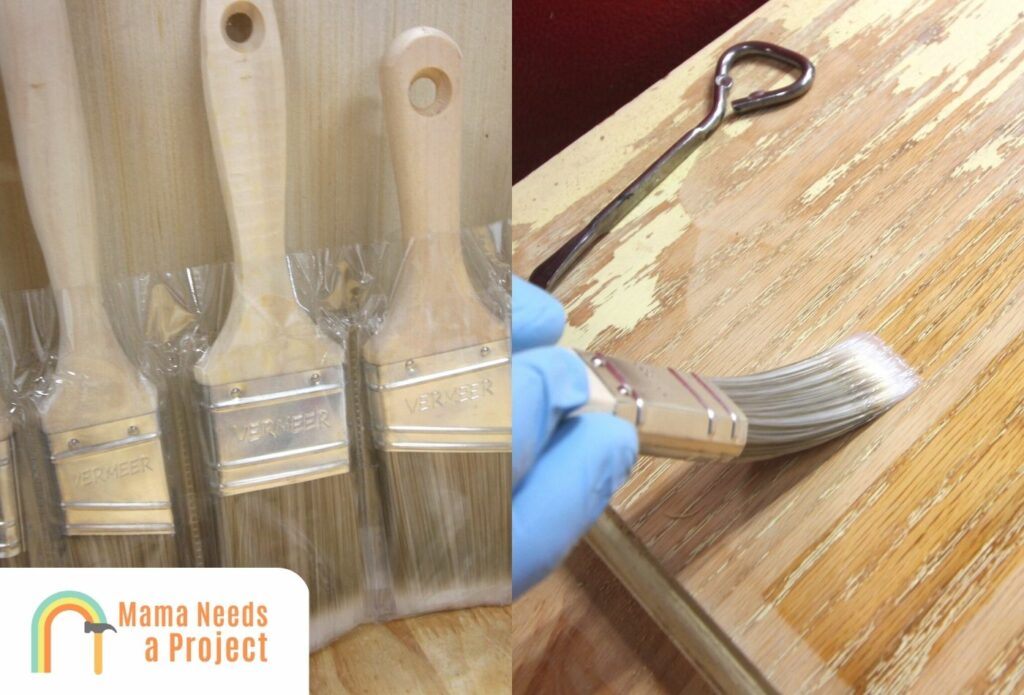
Looking for a budget friendly set of polyurethane brushes? These Pro Grade Paint Brushes are a great value for the money and do a solid job of applying polyurethane evenly on any wood surface.
These are synthetic brushes that do a pretty good job for both interior and exterior projects and provide a smooth finish.
They feature synthetic bristles that are surprisingly good quality which work great on both oil based polyurethane and water based polyurethane.
What I Liked:
- Most budget friendly set of brushes
- Set of different sizes so you don’t have to purchase individually
What I Didn’t Like:
- Slightly more streaking and brush strokes than other options
- No angled tips, which can make reaching some areas difficult
- Brush bristles fell out more easily than some other brushes
My Thoughts:
If you’re looking for a decent quality brush that won’t break the bank, these Pro Grade Paint Brushes are surprisingly good quality for the money. While they aren’t as good as the others listed above, for the money – they’re a great value. The set comes with several sizes which can make them great for a wide range of projects.
Other Stores
6. Wooster Brush 4″ Paintbrush Softip
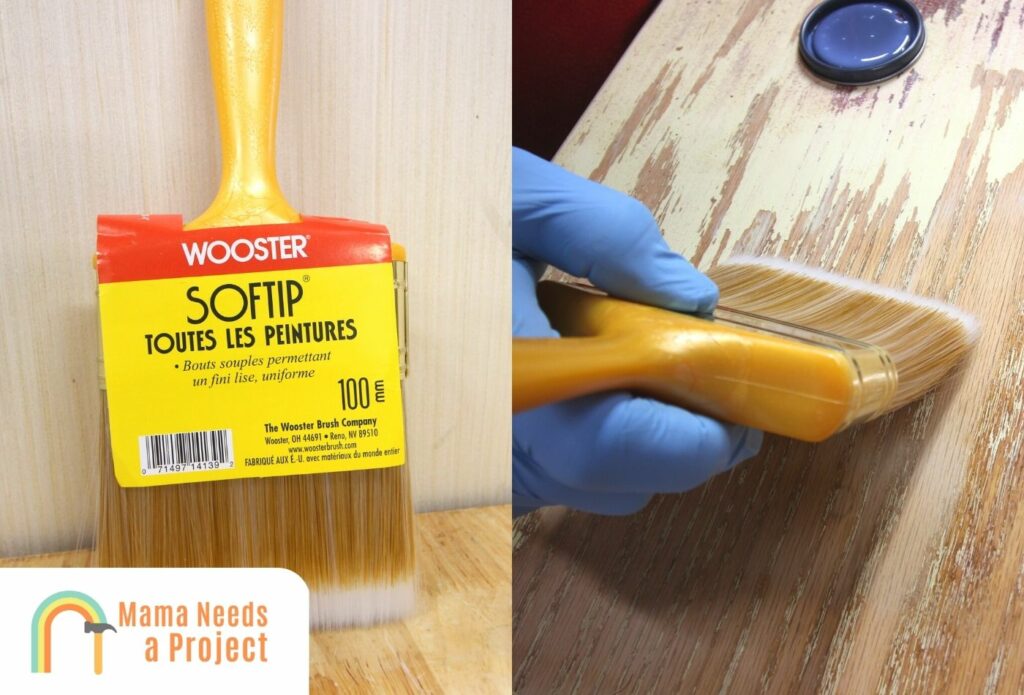
If you’re looking for a larger polyurethane brush, this Wooster 4″ Softip Brush is a great choice. This is the perfect brush for larger projects like floors or decks.
It’s a synthetic bristle brush with extremely soft bristles that makes it one of the best brushes for polyurethane application.
One thing that’s different about this brush compared to most of the others is the plastic handle instead of wood. It’s actually quite comfortable because of how large it is and it’s easier to clean than I thought.
What I Liked:
- Larger brush that can make applying polyurethane quicker
- Large, comfortable plastic handle
- Works well with both water and oil based polyurethane
What I Didn’t Like:
- More streaking and brush marks than other brushes
My Thoughts:
If you’re working on a larger project, the best brush for polyurethane is the Wooster 4″ Brush. This is a larger brush for polyurethane that provides greater coverage for each stroke which is great for floors and other larger projects. It didn’t provide quite as smooth finish as the smaller brushes above, but it did a decent job. If you want to apply a thick coat of polyurethane, this brush does an excellent job.
Other Stores
How to Choose the Right Polyurethane Brush
Types of Brush
There are several different types of polyurethane brushes you should consider when choosing which is best for you.
First, there are natural bristle brushes. These feature natural animal hair bristles that do a better job at reducing streaks and brush marks when you apply polyurethane or stain. Natural bristle brushes are typically more expensive than synthetic versions.
Next, there are synthetic bristle brushes. These feature synthetically made bristles that can be stronger, but they can leave more streaks and marks than natural bristles. These are less expensive and they can last for years.
Finally, there are foam brushes. Some people prefer foam brushes because they can limit marks and provide an even coat of polyurethane. These are also extremely inexpensive and can be used on a variety of projects.
Comfort
When using a brush of any kind, comfort should always be a top priority. If you’re using a brush for hours, it can be annoying to have to take breaks because of how uncomfortable it is.
Most brushes will feature handles made of natural wood or plastic both of which can be decently comfortable.
Width and Size
The width and size of your brush should also be considered when choosing which is best for you.
Some brushes come with different widths that can make it easier and more efficient to apply polyurethane.
Price
There can be a surprising range in prices when it comes to polyurethane brushes. The best brushes will usually be more expensive, but can last for years, if not decades when cared for.
Durability & Longevity
Some brushes will last longer than others. This usually goes hand in hand with the price, but there are some affordable brushes that can last. To maximize the lifespan of your brushes, be sure to clean your polyurethane brushes immediately after using them.
There are a few different aspects when it comes to durability and longevity.
First are the bristles and how easily they fall out. Next is the ferrule, or the metal piece that keeps the bristles intact.
How to Apply Polyurethane Finish with Brush
When applying polyurethane, there are a few critical steps you need to complete to ensure you don’t end up with some of the common polyurethane mistakes like air bubbles or streaking.
Prep the Surface by Sanding
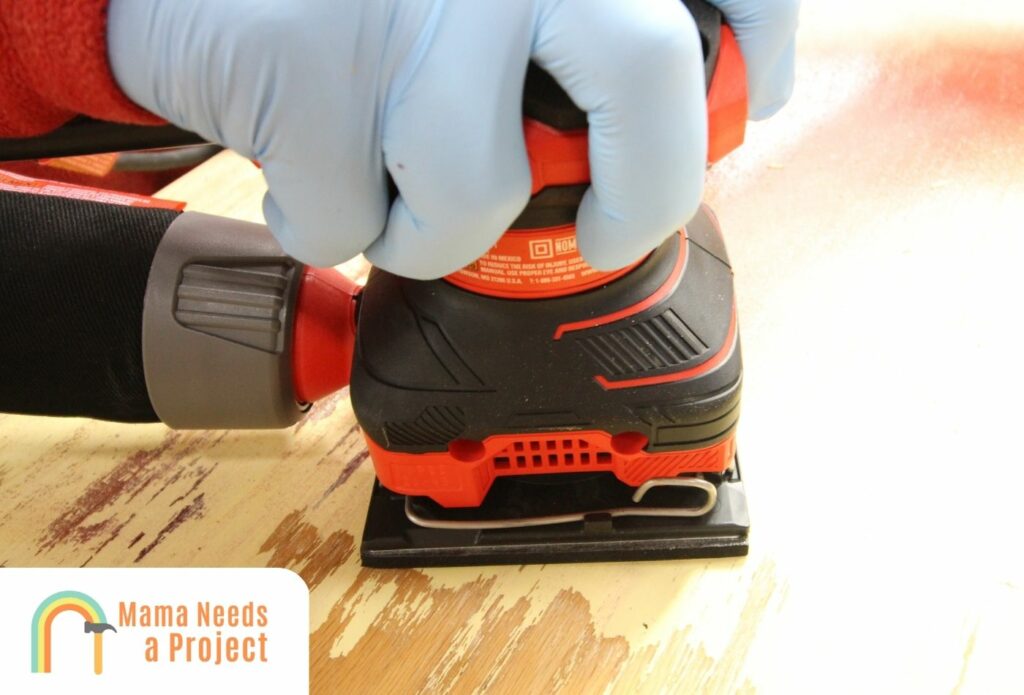
Before you apply poly, you first need to prep the surface. This means sanding it down and removing any dust particles from the area.
If you’re applying polyurethane over paint, you won’t need to sand the area first, but give it a wipe to ensure there are no dust particles on the surface.
Stir Your Polyurethane
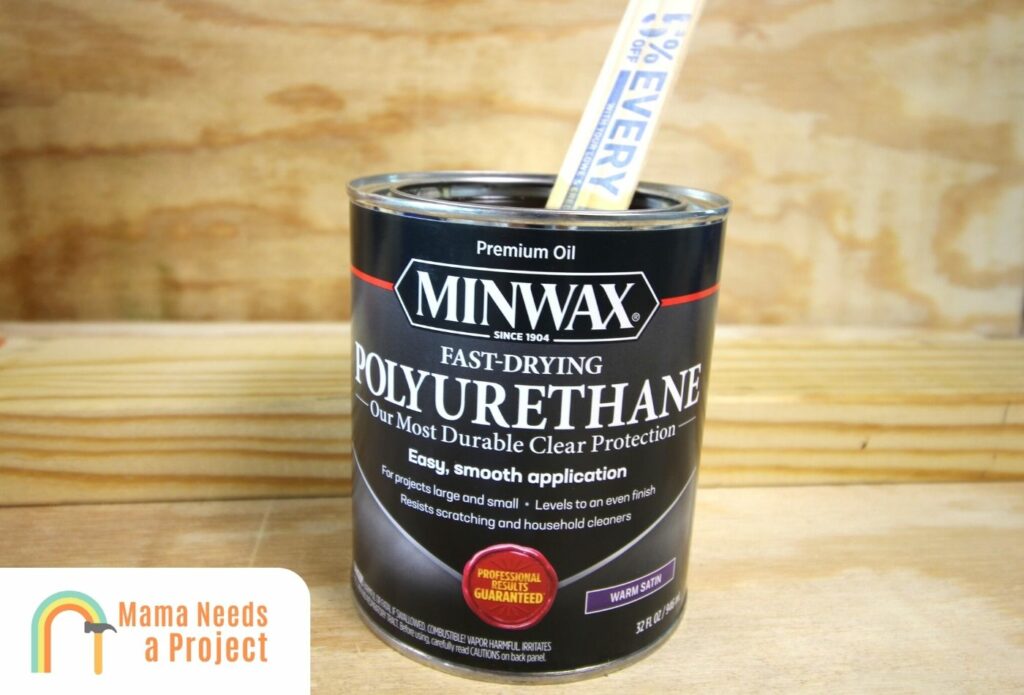
Here’s a critical step that many people miss. Be sure to stir your container of polyurethane well before starting. A few stirs won’t cut it, you need to stir it for 2 to 5 minutes before applying the finish.
Avoid shaking the container as this can cause air bubbles that can ruin your project.
Thin the Polyurethane (Optional)
If you’re using an oil based polyurethane, thinning it is a good idea to avoid brush marks when applying poly. While this step isn’t required, it can help you get the best result.
Apply the First Coat
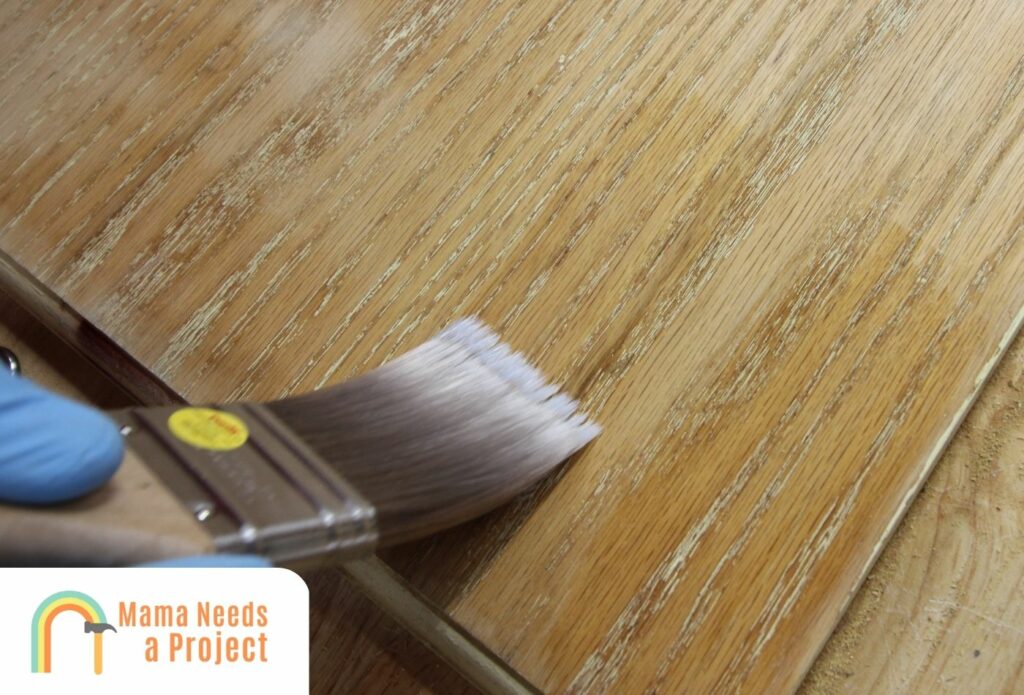
Finally, you can applying your first coat of polyurethane. You should aim for thin coats that cover the entire area.
Lightly Sand
If you’re applying multiple coats of polyurethane, you should always sand in between coats for a better adhesion and coverage.
Apply Additional Coats
Once sanded, applying another coat and repeat these two steps until you reach the desired number of coats on your project. Always be sure to lightly sand in between coats once it has dried.
Let it Cure
Finally, before applying any pressure to the area, be sure to let the polyurethane fully cure. The drying time of polyurethane will vary depending on the type you use, but in most cases, it can require anywhere from 8 hours to 24 hours to begin drying. To fully cure, it can take anywhere from 24 hours to over 7 days.
FAQs
What type of brush is best for polyurethane?
The best brush for polyurethane will depend on the type of polyurethane you’re using. For water based polyurethane, the best brush is a synthetic bristle brush. For oil based polyurethane, the best brush is a natural bristle brush.
What is the best tool to apply polyurethane?
Polyurethane can be brushed, rolled, or even sprayed. The best option will depend on your project. For smaller projects, brushing polyurethane is likely your best option. For large projects, you may consider rolling or spraying to save time.
How do you apply polyurethane without brush marks?
If you want to apply polyurethane without brush strokes, be sure to thin the polyurethane (for oil based polyurethane) with mineral spirits. By thinning the polyurethane, it will disperse when applied so the brush strokes don’t settle.
Can you apply polyurethane with a foam brush?
Yes! Some people prefer foam brushes for applying polyurethane on smaller projects because of hoe easy they are to use and the lack of streaking.
Final Thoughts
The best brush for polyurethane is the Purdy Ox-Hair Series Brush. This brush is a high quality brush that will last for years. It provides great coverage with no streaking or marks left behind.
If you’re looking for the best brush for polyurethane that won’t cost a fortune, I’d recommend the Wooster Angle Sash Paintbrush.

